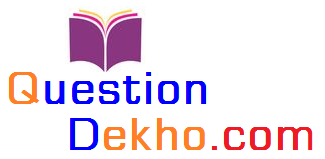Sambalpur University PG Entrance Syllabus is given below in details. Sambalpur University Conducts the SU PG Entrance Examination for the selection of the students for the admission to the Various Post Graduate Courses in Sambalpur University. The detail syllabus for the Sambalpur University PG Entrance Exam is mentioned below. Go through this syllabus to crack the entrance examination.
Sambalpur University PG Entrance Syllabus
(The format of the question will be Multiple Choice Question Type)
M.SC. ELECTRONICS
Aptitude: Mathematical Reasoning Question; Mathematics: Numerical Method, Matrix, Set Theory, Relation and functions, Fourier and Laplace transformation; Complex variables; Probability; Modern Physics; Electricity and Magnetism; Sound and waves; Basic Electronics: Vacuum tubes, Semiconductor physics, pn junctions; Digital Electronics: digital gates, Boolean Algebra, Basic circuits like encoder, decoder, multiplexer; Computer Fundamentals and Basic Programming in C
M.SC. COMPUTER SCIENCE
Aptitude: Mathematical Reasoning Question; Mathematics: Numerical Method, Matrix, Set Theory, Relation and functions; Digital Electronics: digital gates, Boolean Algebra, Basic circuits like encoder, decoder, multiplexer; Basic Programming in C and Data structures like Stack, Queue, Linked List, Tree, Graph; Computer Networks; Concept of object oriented programming; Fundamentals of Computer, Basics of Computer Architecture and Organization, Basic of 8085 microprocessor; Concept of database management Systems, SQL; Operating System
MCA
Aptitude: Mathematical Reasoning Question; Mathematics: Logic, Algebra of sets, Number System, Determinant and metrics, Trigonometry, co-ordinate geometry of two dimensions, Coordinate geometry of three dimensions, Differential calculus, Integral calculus, Differential equations, Probability and statistics, Number Systems ; Digital Electronics: digital gates, Boolean Algebra and computer arithmetic, Basic circuits like encoder, decoder, multiplexer; Basic Programming in C and Data structures like Stack, Queue, Linked List, Tree, Graph; Computer Networks; Concept of object oriented programming; Fundamentals of Computer, Basics of Computer Architecture and Organization, Basic of 8085 microprocessor; Concept of database management Systems, SQL; Operating System.
M.PHIL ELECTRONICS
Electronic Transport in semiconductor, PN Junction, Semiconductor diodes, characteristics and equivalent circuits of BJT, JFET,MOSFET, IC fabrication. Rectifiers, Voltage regulated ICs and regulated power supply, Biasing of Bipolar junction transistors and JFET. Single stage amplifiers, Multistage amplifiers, Feedback in amplifiers, oscillators, function generators, multivibrator, Operational Amplifiers (OP AMP), Phase locked loop, A/D and D/A converters. Network elements, Network graphs, Network Theorems, Nodal and Mesh analysis, Time and frequency domain responses. Image impedance and passive filters. Two – port Network,AC circuit analysis, Transient analysis. Logic families, flip – flops, Gates, Boolean algebra and minimization techniques, Multivibrators and clock circuits, Counters-Ring, Ripple. Synchronous, Asynchronous, Up and down shift registers, multiplexers and demultiplexers, Arithmetic circuits, Memories. Architecture and Programming of 8085 and 8086 Microprocessors Characteristics of solid state power devices – SCR, Triac and UJT. Maxwell’s equations, Time varying fields, Wave equation and its solution. Basic concepts of signal processing and digital filters. Basic principles of amplitude, frequency and phase modulation, Demodulation, Intermediate frequency and principle of superheterodyne receiver, Spectral analysis and signal transmission through linear systems, Random signals and noise, Noise temperature and noise figure. Basic concepts of information theory, Digital modulation and Demodulation; PM, PCM, ASK, FSK, PSK,Time-division Multiplexing, Frequency-Division Multiplexing, Data Communications-Circuits, Codes and Modems.
M.PHIL COMPUTER SCIENCE
Discrete Mathematics: Set Theory, Relation and Function, Boolean algebra, propositional logic, Partial Order Sets, Graph, Tree
Digital Electronics: Number System Conversion, Digital Gates, Encoder, Decoder, Multiplexer, De-multiplexer, Counter, Flip-flops
Programming in C: Data type, different types of Statements used, function, dynamic memory allocation, structures, pointers, array, file IO.
Object Oriented Programming Concept: Basic Concept of Object oriented programming languages
Data Structures and Algorithm: Searching, Sorting, Analysis of algorithms, Stack, Queue,
tree : traversal algorithms, BST, AVL, Red Black tree, Heap, B/B+ trees, Optimal BST,
graph: representation, Traversal algorithms, shortest path, Spanning tree algorithms, hashing, Divide conquer, Dynamic programming, Back tracking.
Database Management Systems: Basic concept, ER/EER modeling, SQL, Relational Algebra, Relational Calculus, Functional dependency and Normalization (up to BCNF), Basic idea on database transaction, Concurrency control and recovery process
Computer Organization and Architecture: Basic structure (Von neuman architecture), bus, control unit, ALU, cache memory, virtual memory, secondary memory architecture
Data Communication and Computer Networks: Basic idea about computer communication, ISO/OSI reference model, TCP/IP model, work function and different protocols related to OSI model.
Concept of Operating systems: Job of operating system, Concept of Process: basic idea, synchronization, scheduling, starvation, deadlock, memory management, file system, disk scheduling algorithms
Software Engineering: Basic concept of software engineering, Software development models,Software requirement and specification, coding, testing, software risk analysis and management
M.TECH. COMPUTER SCIENCE & ENGINEERING
This syllabus is similar to GATE syllabus of computer science.
The skeleton of the syllabus is given bellow: Aptitude: Mathematical Reasoning Question; Mathematical Logic: Propositional Logic; First Order Logic; Probability and Statistics; Set Theory & Algebra; Set theory; Relations and Functions; Groups; Partial Orders; Lattice; Boolean Algebra; Combinatorics; Graph Theory; Linear Algebra and Matrices; Numerical Methods; Calculus; Digital Logic Number representation and computer arithmetic (fixed and floating point); Computer Organization and Architecture; Data and File Structures; Programming in C; Algorithms; Theory of Computation; Compiler Design; Operating System; Databases; Software Engineering; Computer Networks; Network security; Web technologies: HTML, XML, basic concepts of client-server computing.
M.TECH. COMMUNICATION SYSTEM ENGINEERING
Linear Algebra: Matrix Algebra, Systems of linear equations, Eigenvalues and eigenvectors; Calculus; Fourier series; Differential equations; Complex variables; Probability and Statistics; Numerical Methods; Transform Theory; Network Theory; Electronic Devices; Analog Circuits; Digital circuits; Signals and Systems; Control Systems; Communications; Electromagnetics; Basics of Embedded Systems, Microprocessor and Microcontroller.
M.TECH. EMBEDDED SYSTEM DESIGN
Linear Algebra: Matrix Algebra, Systems of linear equations, Eigenvalues and eigenvectors; Calculus; Fourier series; Differential equations; Complex variables; Probability and Statistics; Numerical Methods; Transform Theory; Network Theory; Electronic Devices; Analog Circuits; Digital circuits; Signals and Systems; Control Systems; Communications; Electromagnetics; Basics of Embedded Systems, Microprocessor and Microcontroller.
